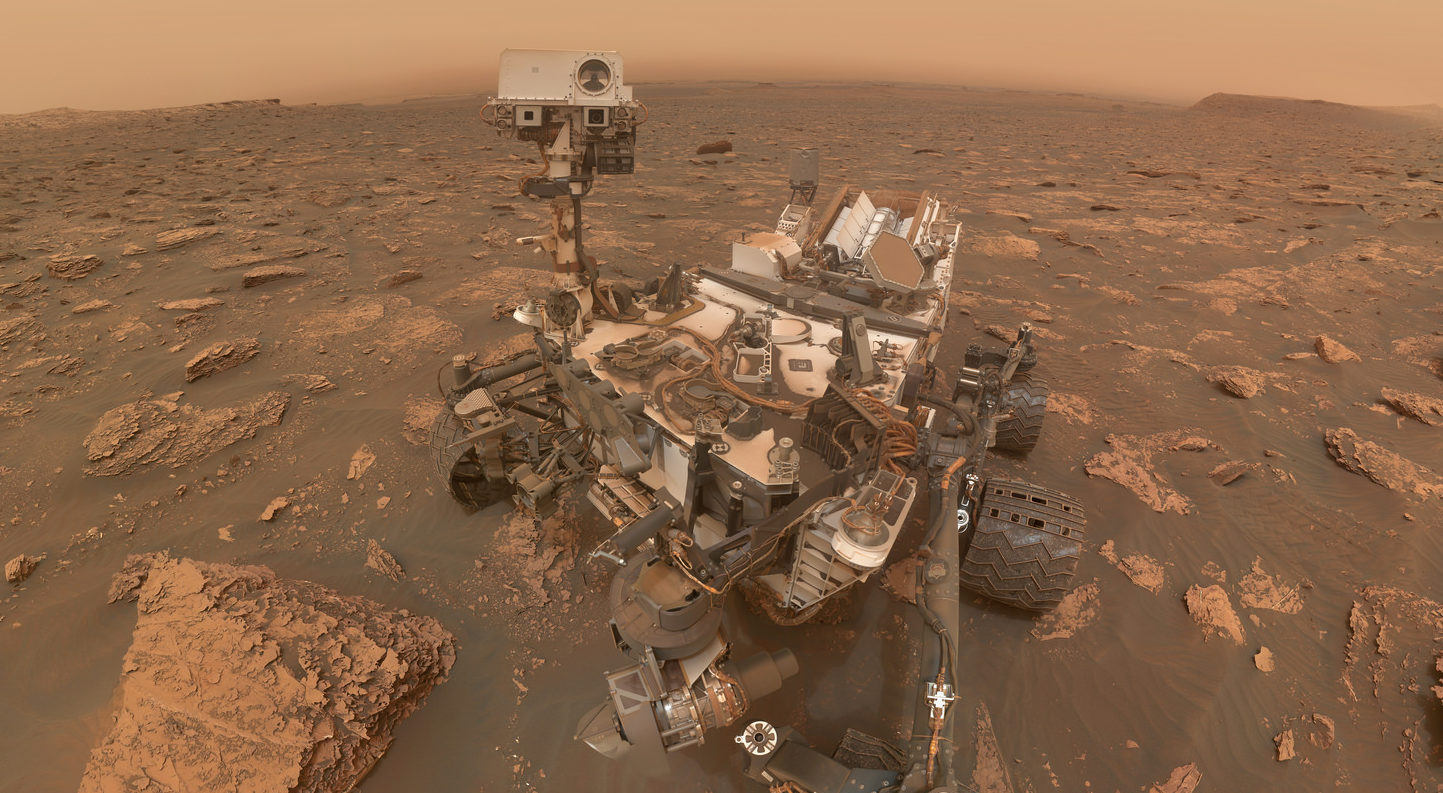
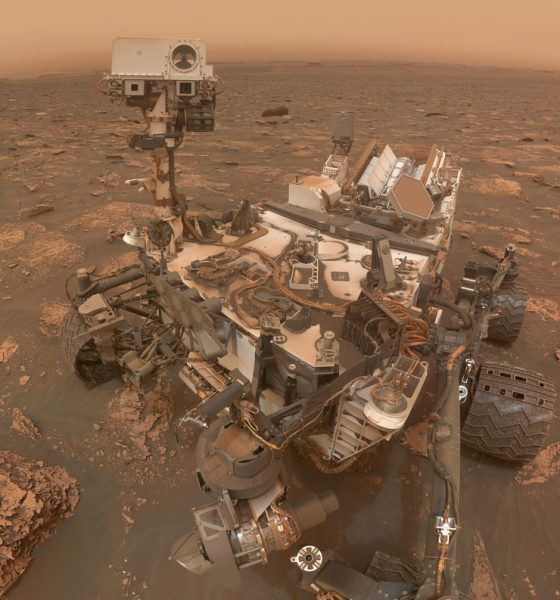
Space
NASA's resilient Curiosity Rover bounces back once more after attitude issue
NASA’s Curiosity rover had a little attitude problem earlier this week. The issue sidelined the rover for a brief time, but the golf cart-sized robot is back to roaming the red planet.
In rover speak, “attitude” doesn’t mean Curiosity is being sassy, but rather it refers to the robot’s position in space. Curiosity needs to know where it and its robotic arm (which is where the robot’s instruments are kept) are at all times. This helps keep the rover safe.
If Curiosity fails to keep track of its attitude, it could accidentally point one of its cameras towards the sun or even damage an instrument by hitting it on a nearby rock or boulder.
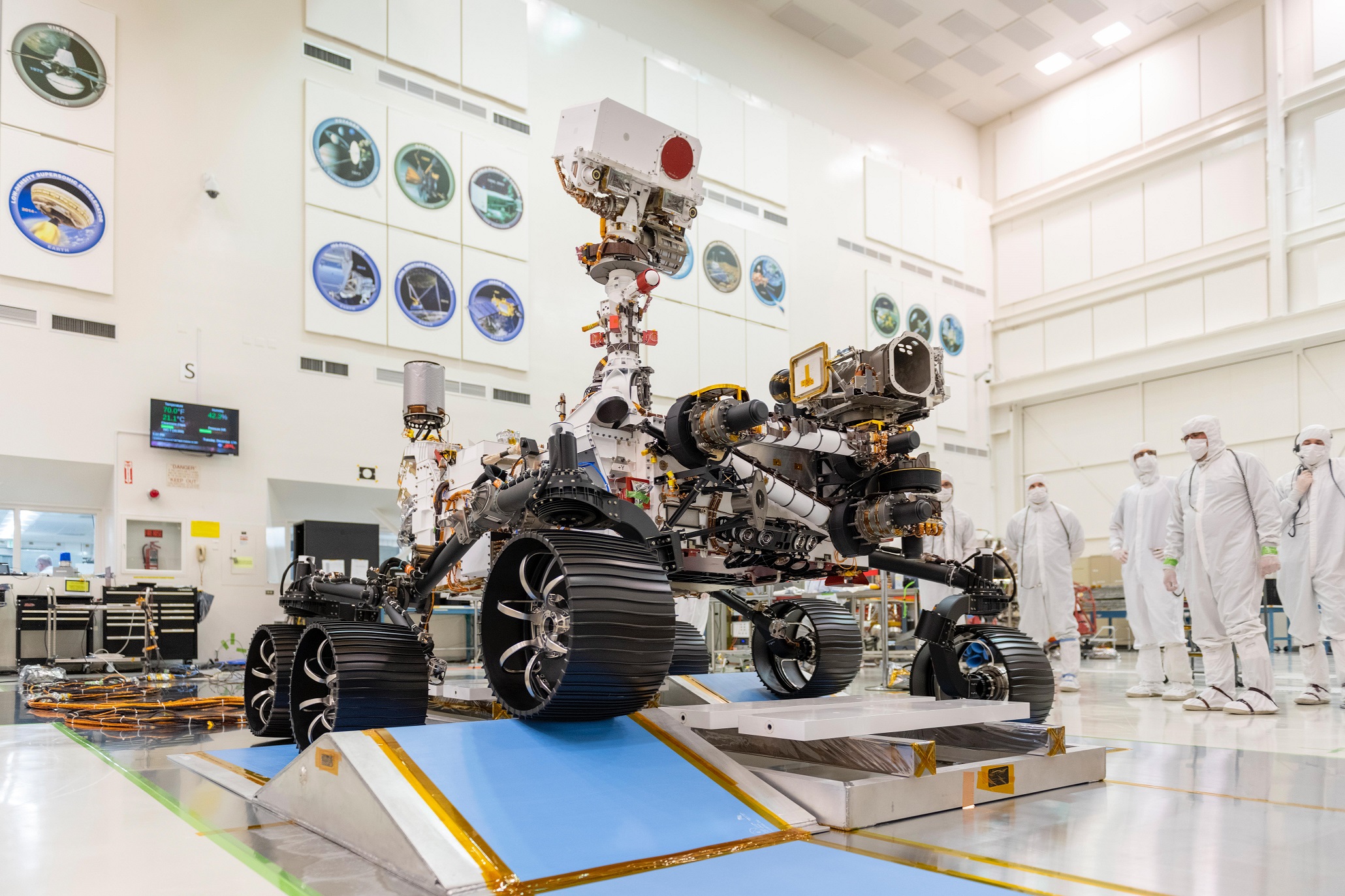
“Partway through its last set of activities, Curiosity lost its orientation. Some knowledge of its attitude was not quite right, so it couldn’t make the essential safety evaluation,” Dawn Sumner, a planetary geologist and Curiosity team member wrote in a mission update on Monday (Jan. 20).
“Thus, Curiosity stopped moving, freezing in place until its knowledge of its orientation can be recovered,” she added. “Curiosity kept sending us information, so we know what happened and can develop a recovery plan.”
Curiosity has explored the Martian surface since 2012, and over the course of its mission, the rover has bounced back from numerous glitches—this was no exception. Thanks to the robot’s handlers, a plan was quickly implemented and Curiosity started moving again.
Their plan was to manually send the robot its location information. Soon after, Curiosity was back in action.
 The Curiosity rover captures a view of an outcrop with finely layered rocks within the ‘Murray Buttes’ region on lower Mount Sharp. Credit: NASA/JPL-Caltech
The Curiosity rover captures a view of an outcrop with finely layered rocks within the ‘Murray Buttes’ region on lower Mount Sharp. Credit: NASA/JPL-Caltech
“We learned this morning that plan was successful and Curiosity was ready for science once more!” said Scott Guzewich, mission team member and atmospheric scientist at NASA’s Goddard Space Flight Center in Greenbelt, Maryland, wrote in a subsequent update.
This isn’t the first time the rover dealt with issues. Curiosity has overcome multiple glitches and setbacks during its time on Mars. But thanks to a robust design and a team of highly-skilled engineers, the rover has been able to work through the various issues that have popped up. (Including memory issues as well as damage to its wheels from the rougher-than-expected Martian terrain.)
In fact, Curiosity originally had just a two-year mission, but has performed so well, that the six-wheeled rover is in its seventh year.
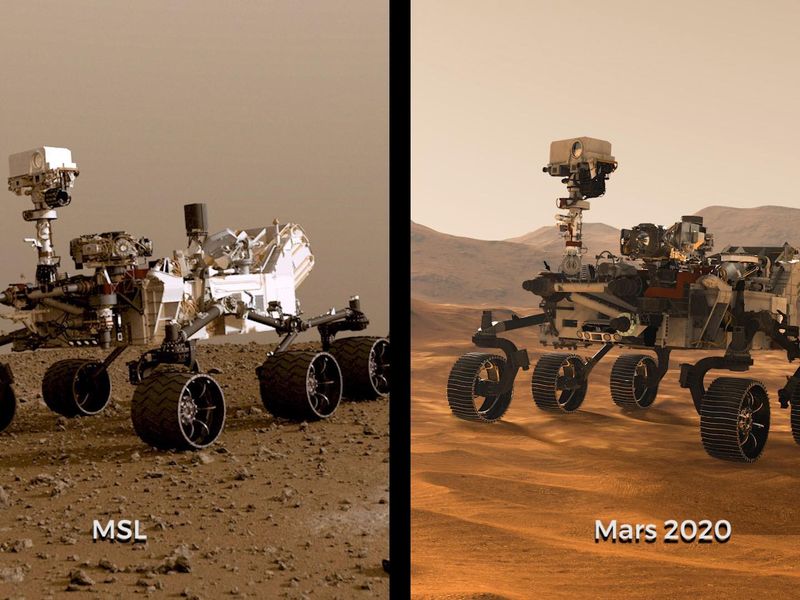 A side-by-side view of the Mars 2020 and Curiosity rovers. Credit: NASA/JPL-Cal-Tech
A side-by-side view of the Mars 2020 and Curiosity rovers. Credit: NASA/JPL-Cal-Tech
The rover landed inside Gale Crater, a 96-mile-wide (154-kilometer) crater in August 2012, and was tasked with assessing the region’s habitability. Did life once flourish in this spot? So far, Curiosity has not found direct evidence of past life on Mars, but the rolling scientist did discover that the spot was once home to a lake and stream system, some time in Mars’s past.
Currently, the rover is exploring the foothills of Mount Sharp, a 3.4-mile-high mountain jetting up from the crater’s center. Here, the rover will look for clues about Mars’s ancient climate and how it changed over millions of years.
Right now, Curiosity is the only functioning rover on the red planet’s surface. NASA’s storied Opportunity rover was shut down following a planet-wide dust storm that blocked out the lift-sustaining sunshine the rover needed to power its batteries.
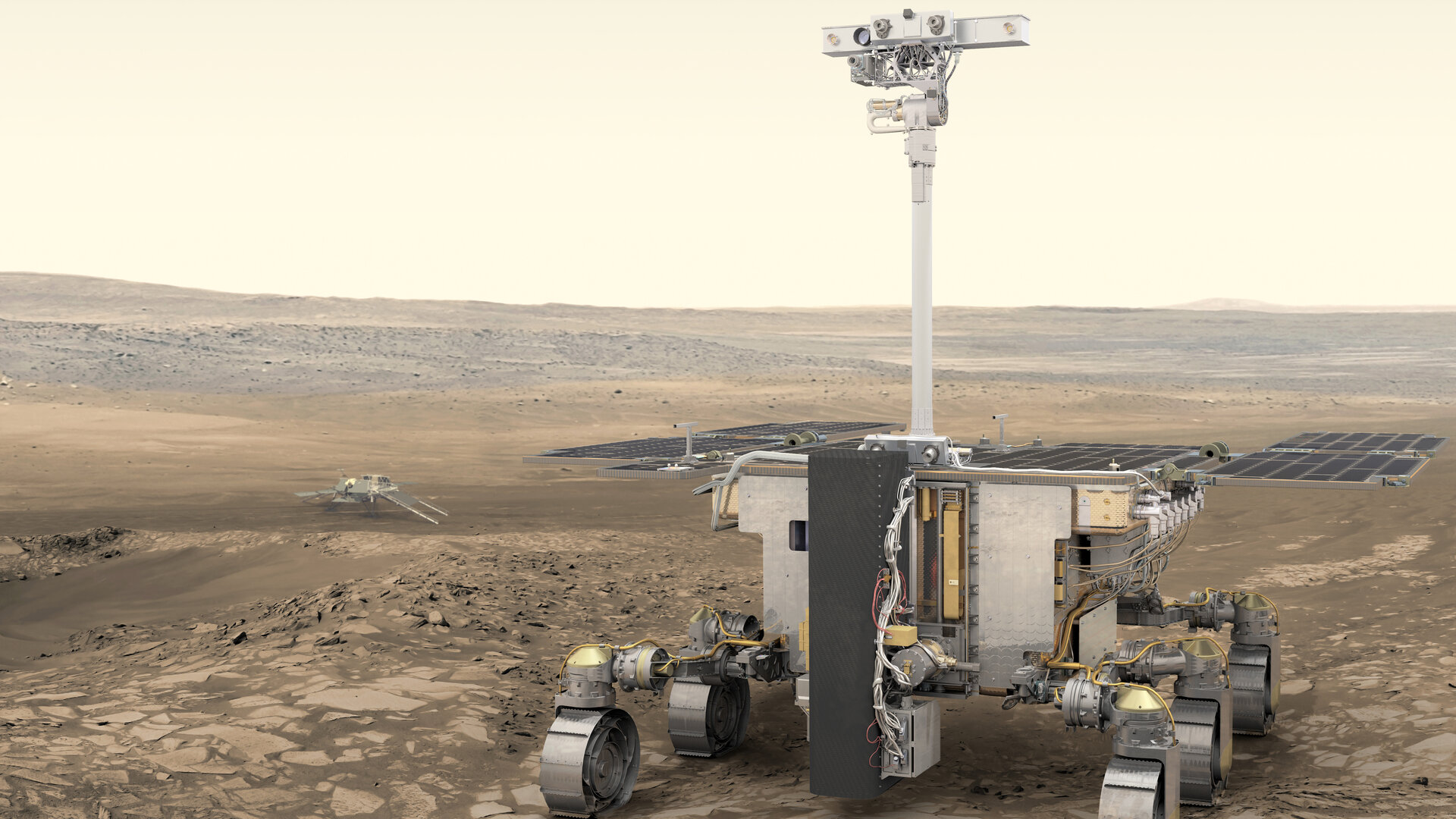 ESA’s ExoMars rover will roam the rusty Martian surface in search for signs of life.
ESA’s ExoMars rover will roam the rusty Martian surface in search for signs of life.In July, NASA will be sending its next rover—a souped up version of Curiosity—to Mars. Designed to search for signs of life, the Mars 2020 rover will arrive on the red planet in March 2021. Landing in Jezero Crater, the rover will bag up samples for return to Earth at a later time.
But that’s not all. The European Space Agency (ESA) is teaming with Russia’s Roscosmos to send its own rover to Mars. The Rosalind Franklin, ExoMars rover will also look for signs of past life on Mars.

News
SpaceX shades airline for seeking contract with Amazon’s Starlink rival

SpaceX employees, including its CEO Elon Musk, shaded American Airlines on social media this past weekend due to the company’s reported talks with Amazon’s Starlink rival, Leo.
Starlink has been adopted by several airlines, including United Airlines, Qatar Airways, Hawaiian Airlines, WestJet, Air France, airBaltic, and others. It has gained notoriety as an extremely solid, dependable, and reliable option for airline travel, as traditional options frequently cause users to lose connection to the internet.
Many airlines have made the switch, while others continue to mull the options available to them. American Airlines is one of them.
A report from Bloomberg indicates the airline is thinking of going with a Starlink rival owned by Amazon, called Leo. It was previously referred to as Project Kuiper.
American CEO Robert Isom said (via Bloomberg):
“While there’s Starlink, there are other low-Earth-orbit satellite opportunities that we can look at. We’re making sure that American is going to have what our customers need.”
Isom also said American has been in touch with Amazon about installing Leo on its aircraft, but he would not reveal the status of any discussions with the company.
The report caught the attention of Michael Nicolls, the Vice President of Starlink Engineering at SpaceX, who said:
“Only fly on airlines with good connectivity… and only one source of good connectivity at the moment…”
CEO Elon Musk replied to Nicolls by stating that American Airlines risks losing “a lot of customers if their connectivity solution fails.”
American Airlines will lose a lot of customers if their connectivity solution fails
— Elon Musk (@elonmusk) December 14, 2025
There are over 8,000 Starlink satellites in orbit currently, offering internet coverage in over 150 countries and territories globally. SpaceX expands its array of satellites nearly every week with launches from California and Florida, aiming to offer internet access to everyone across the globe.
Currently, the company is focusing on expanding into new markets, such as Africa and Asia.
News
Tesla hints at Starlink integration with recent patent
“By employing polymer blends, some examples enable RF transmission from all the modules to satellites and other communication devices both inside and outside the vehicle.”

Tesla hinted at a potential Starlink internet terminal integration within its vehicles in a recent patent, which describes a vehicle roof assembly with integrated radio frequency (RF) transparency.
The patent, which is Pub. No U.S. 2025/0368267 describes a new vehicle roof that is made of RF-transparent polymer materials, allowing and “facilitating clear communication with external devices and satellites.”
Tesla believes that a new vehicle roof design, comprised of different materials than the standard metallic or glass elements used in cars today, would allow the company to integrate modern vehicular technologies, “particularly those requiring radio frequency transmission and reception.
Tesla has recently filed a US patent application on integrating RF transparent materials into the roof structure.
“facilitating clear communication with external devices and satellites”
Tesla fleet is getting @Starlink connectivity integration soon. LFG @Tesla @elonmusk… pic.twitter.com/bLa8YtPLd1
— Chansoo Byeon (@Chansoo) December 9, 2025
Instead of glass or metallic materials, Tesla says vehicles may benefit from high-strength polymer blends, such as Polycarbonate, Acrylonitrile Butadiene Styrene, or Acrylonitrile Styrene Acrylate.
These materials still provide ideal strength metrics for crashworthiness, stiffness for noise, vibration, and harshness control, and are compliant with head impact regulations.
They would also enable better performance with modern technologies, like internet terminals, which need an uninterrupted signal to satellites for maximum reception. Tesla writes in the patent:
“By employing polymer blends, some examples enable RF transmission from all the modules to satellites and other communication devices both inside and outside the vehicle.”

One of the challenges Tesla seems to be aware of with this type of roof design is the fact that it will still have to enable safety and keep that at the forefront of the design. As you can see in the illustration above, Tesla plans to use four layers to increase safety and rigidity, while also combating noise and vibration.
It notes in the patent that disclosed examples still meet the safety requirements outlined in the Federal Motor Vehicle Safety Standards (FMVSS).
Starlink integrated directly into Tesla vehicles would be a considerable advantage for owners. It would come with a handful of distinct advantages.
Initially, the inclusion of Starlink would completely eliminate cellular dead zones, something that is an issue, especially in rural areas. Starlink would provide connectivity in these remote regions and would ensure uninterrupted service during road trips and off-grid adventures.
It could also be a critical addition for Robotaxi, as it is crucial to have solid and reliable connectivity for remote monitoring and fleet management.
Starlink’s growing constellation, thanks to SpaceX’s routine and frequent launch schedule, will provide secure, stable, and reliable internet connectivity for Tesla vehicles.
Although many owners have already mounted Starlink Mini dishes under their glass roofs for a similar experience, it may be integrated directly into Teslas in the coming years, either as an upgrade or a standard feature.
Investor's Corner
SpaceX IPO is coming, CEO Elon Musk confirms
However, it appears Musk is ready for SpaceX to go public, as Ars Technica Senior Space Editor Eric Berger wrote an op-ed that indicated he thought SpaceX would go public soon. Musk replied, basically confirming it.

Elon Musk confirmed through a post on X that a SpaceX initial public offering (IPO) is on the way after hinting at it several times earlier this year.
It also comes one day after Bloomberg reported that SpaceX was aiming for a valuation of $1.5 trillion, adding that it wanted to raise $30 billion.
Musk has been transparent for most of the year that he wanted to try to figure out a way to get Tesla shareholders to invest in SpaceX, giving them access to the stock.
He has also recognized the issues of having a public stock, like litigation exposure, quarterly reporting pressures, and other inconveniences.
However, it appears Musk is ready for SpaceX to go public, as Ars Technica Senior Space Editor Eric Berger wrote an op-ed that indicated he thought SpaceX would go public soon.
Musk replied, basically confirming it:
As usual, Eric is accurate
— Elon Musk (@elonmusk) December 10, 2025
Berger believes the IPO would help support the need for $30 billion or more in capital needed to fund AI integration projects, such as space-based data centers and lunar satellite factories. Musk confirmed recently that SpaceX “will be doing” data centers in orbit.
AI appears to be a “key part” of SpaceX getting to Musk, Berger also wrote. When writing about whether or not Optimus is a viable project and product for the company, he says that none of that matters. Musk thinks it is, and that’s all that matters.
It seems like Musk has certainly mulled something this big for a very long time, and the idea of taking SpaceX public is not just likely; it is necessary for the company to get to Mars.
The details of when SpaceX will finally hit that public status are not known. Many of the reports that came out over the past few days indicate it would happen in 2026, so sooner rather than later.
But there are a lot of things on Musk’s plate early next year, especially with Cybercab production, the potential launch of Unsupervised Full Self-Driving, and the Roadster unveiling, all planned for Q1.








